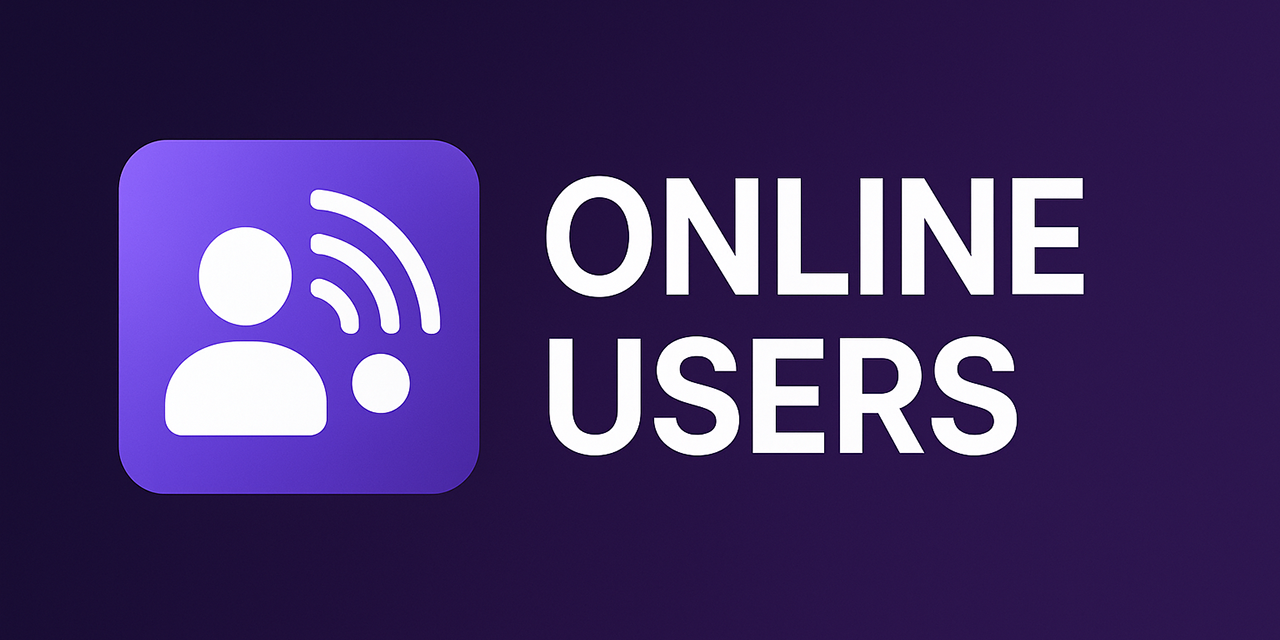klevze / online-users
Display online users on a webpage
Installs: 62
Dependents: 0
Suggesters: 0
Security: 0
Stars: 1
Watchers: 1
Forks: 0
Open Issues: 0
pkg:composer/klevze/online-users
Requires
- php: >=8.1
- illuminate/support: ^10 || ^11 || ^12
Requires (Dev)
- doctrine/dbal: ^3.6
- friendsofphp/php-cs-fixer: ^3.16
- mockery/mockery: ^1.5
- orchestra/testbench: ^7.0 || ^8.0 || ^9.0 || ^10.0 || ^11.0
- php-coveralls/php-coveralls: ^0.1.0
- phpstan/phpstan: ^1.10
- phpunit/phpunit: ^10.1
Suggests
- illuminate/support: Required for laravel service providers
README
You can also set these variables in your .env file (example below).
Note: This repository currently runs CI only for Laravel 12. The older per-version workflow files for Laravel 10 and 11 were removed to simplify the workflow matrix and remove duplicate CI runs. If you need per-Laravel-version badges again, recreate the per-version workflows or restore
run-tests-laravel-10.ymlandrun-tests-laravel-11.yml.
"Online Users" is a Laravel package designed to effortlessly track and display the real-time count of users currently active on your web application. With seamless integration, this package provides a quick and reliable solution for monitoring and presenting the dynamic online user presence, enhancing the overall user experience on your Laravel-powered website.
Installation
You can install the package via composer:
composer require klevze/online-users
You can publish and run the migrations and configuration with:
php artisan vendor:publish --tag="online-users-migrations" php artisan vendor:publish --tag="online-users-config" php artisan migrate
Integration with Laravel's Kernel Middleware
To enable the "Online Users" middleware in your Laravel application, follow these steps:
-
Open the
app/Http/Kernel.phpfile in your Laravel project. -
Locate the
$middlewareGroupsproperty, specifically within thewebmiddleware group. -
Add the following line to the
webmiddleware group:protected $middlewareGroups = [ 'web' => [ // ... other middleware entries \Klevze\OnlineUsers\Middleware\TrackUserActivity::class, // ... other middleware entries ];
The "CleanupInactiveUsers" console command provided by the "Online Users" package allows you to remove inactive users from the user_activities table. Follow the steps below to integrate and schedule the cleanup task.
-
Open the
app/Console/Kernel.phpfile in your Laravel project. -
Locate the
schedulemethod and add the following entry to schedule thecleanup:inactive-userscommand every five minutes:protected function schedule(Schedule $schedule) { // ... other scheduled tasks $schedule->command('cleanup:inactive-users')->everyFiveMinutes(); // ... other scheduled tasks }
-
Save the changes to the
Kernel.phpfile.
Now, the "CleanupInactiveUsers" console command will run every five minutes, cleaning up inactive users from the user_activities table.
Usage
Once package is installed, you can use the OnlineUsers class to get the number of active users. For example, the following code will get the number of active users:
$activeUsers = OnlineUsers::getActiveUsers();
Or you can use it directly in blade view:
<p>Currently browsing: {{ OnlineUsers::getActiveUsers() ?? 0 }}</p> You can customize the activity threshold and tracking strategy by publishing and editing the `config/online-users.php` file. Compatibility: This package supports Laravel 10, 11 and 12 and requires PHP 8.1 or newer. If you are using Laravel 12, ensure your application meets Laravel 12's PHP requirements. ### IP anonymization (privacy) For privacy-conscious deployments you can anonymize user IP addresses before saving them to the database. To enable anonymization: 1. Publish the config: `php artisan vendor:publish --tag="online-users-config"`. 2. Set `anonymize_ip` to `true` and set `ip_salt` to a large secret string in `config/online-users.php` or via environment variables. Or set in your `.env`: ```env ONLINE_USERS_ANONYMIZE_IP=true ONLINE_USERS_IP_SALT=your-long-random-salt
When enabled, the package will store a sha256 hash of the IP address concatenated with the salt to help protect user privacy while still allowing approximate uniqueness checks.
Upgrading and migrating existing installs
To add the user_ip_hash column (if you installed the package before hashed IP support was added) you should publish and run the new migration:
php artisan vendor:publish --tag="online-users-migrations"
php artisan migrate
After running the migration you can populate the newly created hash column using this command (requires a valid ONLINE_USERS_IP_SALT):
php artisan online-users:populate-ip-hash
The online-users:populate-ip-hash command will compute the hash for rows that don't yet have one. It uses your configured ONLINE_USERS_IP_SALT and ONLINE_USERS_HASH_ALGORITHM.
If you want to keep raw IPs along with hashed IPs for additional analysis, set ONLINE_USERS_STORE_RAW_IP=true.
Dropping raw IPs (optional)
If you decide to stop storing raw IPs after you are certain user_ip_hash has been populated, run the migration that removes the raw column:
php artisan vendor:publish --tag="online-users-migrations"
php artisan migrate
Before dropping raw IPs, please ensure you have a backup of your database. Recommended workflow:
- Make a backup of your database.
- Run
php artisan migrateto adduser_ip_hash(if not already present). - Run
php artisan online-users:populate-ip-hashto fill theuser_ip_hashcolumn. - Verify data and application functionality.
- If all good, run
php artisan migratewhich will pick up thedropmigration to remove theuser_ipcolumn.
Note: hashing is irreversible; if you need the raw IP for logging, do not enable this option.
Demo
You can see a working demo at these sites:
License
The MIT License (MIT). Please see License File for more information.
Automated Code Style Fixes
This project runs php-cs-fixer in CI. To allow the code-style workflow to auto-commit fixes back to pull requests, add a repository secret named STYLE_BOT_TOKEN with a personal access token (PAT) that has repo permissions. When set, the workflow will commit fixes directly to the PR branch.
If you do not set STYLE_BOT_TOKEN, the workflow will attempt to use the default GITHUB_TOKEN where permitted (works for branches in the same repository but not for PRs from forks).
When the workflow runs on a PR it will now create a new pull request with automatic style fixes (rather than pushing changes directly to the originating branch). The original PR will receive a comment linking to the fixes PR.

